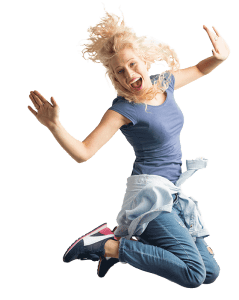 Just as the invention of the transistor eliminated the need for vacuum tubes, advances in technology allow us to create new and unique entertainment solutions with more and more features. We thought it would be fun to take a quick look at a few important car audio technologies throughout history.
Just as the invention of the transistor eliminated the need for vacuum tubes, advances in technology allow us to create new and unique entertainment solutions with more and more features. We thought it would be fun to take a quick look at a few important car audio technologies throughout history.
Transistors
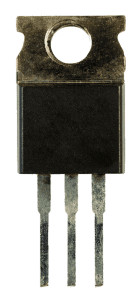 The first car radios used vacuum tubes as integral parts of their tuner and amplifier circuitry. Tubes required high-voltage power supplies and consumed a lot of power. They produce a lot of heat and are fragile. The result was finicky products with limited performance. The first transistor was theorized in 1926 but wasn’t built for the first time until 1947. It wasn’t until 1955 that we saw Chrysler and Philco announce the first automotive transistor radio – the Mopar model 914HR.
The first car radios used vacuum tubes as integral parts of their tuner and amplifier circuitry. Tubes required high-voltage power supplies and consumed a lot of power. They produce a lot of heat and are fragile. The result was finicky products with limited performance. The first transistor was theorized in 1926 but wasn’t built for the first time until 1947. It wasn’t until 1955 that we saw Chrysler and Philco announce the first automotive transistor radio – the Mopar model 914HR.
The transistor is considered one of the greatest inventions of the 20th century. Transistors improved the efficiency and reliability of electronics components and led to the creation of microchips and ultimately computers. The Apple A11 Bionic CPU, found in the iPhone 8, 8 Plus and iPhone X, has 4.3 million transistors built into it. The Microsoft Xbox One main CPU has more than 7 million transistors inside. More impressively, a 128 gigabyte stick of DRAM memory has more than 137 quadrillion transistors!
Broadcast Radio
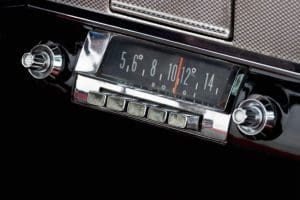 Radio was truly the technology that drove car audio systems. The first radio broadcasts were weekly special events that included concerts in 1914 and daily news broadcasts in 1916. On May 20, 1920, XWA – the experimental station of the Canadian Marconi Co. – began regular broadcasts in Montreal. XWA claims status as the first commercial broadcaster in the world. These were all AM (amplitude modulation) stations. FM (frequency modulation) radio was patented in 1933, but it wasn’t until the late ’30s that FM broadcasts became popular. The broadcast of a stereo FM signal was first considered by the FCC in the late 1950s, and a standard was approved in 1961.
Radio was truly the technology that drove car audio systems. The first radio broadcasts were weekly special events that included concerts in 1914 and daily news broadcasts in 1916. On May 20, 1920, XWA – the experimental station of the Canadian Marconi Co. – began regular broadcasts in Montreal. XWA claims status as the first commercial broadcaster in the world. These were all AM (amplitude modulation) stations. FM (frequency modulation) radio was patented in 1933, but it wasn’t until the late ’30s that FM broadcasts became popular. The broadcast of a stereo FM signal was first considered by the FCC in the late 1950s, and a standard was approved in 1961.
The Compact Cassette and 8-Track Tape
 Reel-to-reel recording on magnetic tapes was popular in the 1940s but wasn’t suitable for use in mobile applications. The 8-track was preceded by the Stereo-Pak 4-track cartridge in 1962. The endless-loop cartridge could store both sides of a vinyl album. The 8-track, known originally as the Lear Jet Stereo 8 Track Cartridge, was launched by Bill Lear in 1963. In 1965, Ford offered factory and dealer-installed 8-track options on its Mustang and Thunderbird and on several high-end Lincoln vehicles.
Reel-to-reel recording on magnetic tapes was popular in the 1940s but wasn’t suitable for use in mobile applications. The 8-track was preceded by the Stereo-Pak 4-track cartridge in 1962. The endless-loop cartridge could store both sides of a vinyl album. The 8-track, known originally as the Lear Jet Stereo 8 Track Cartridge, was launched by Bill Lear in 1963. In 1965, Ford offered factory and dealer-installed 8-track options on its Mustang and Thunderbird and on several high-end Lincoln vehicles.
Call it a tape or a cassette, the first compact cassette (as we know it) was introduced by the Phillips Corp. in 1963 as a storage medium for dictation machines. Widespread use of the compact cassette in the mid-’70s and the introduction of chromium dioxide (CrO2) as a premium recording medium and Dolby B noise reduction spelled the end of the 8-track.
Digital Audio
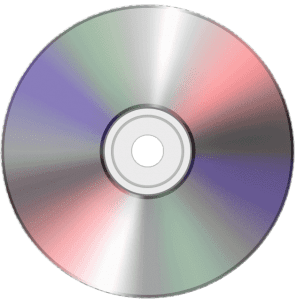 Most people don’t realize that digital audio (known then as pulse code modulation) was invented in 1937 in Britain and was used in telecommunications. In the late ’60s, Denon pioneered commercial digital recording. The BBC used digital audio transmissions to link its broadcast center to its transmitter in 1972. Sony and Mitsubishi drove the consumer popularization of digital audio in the early ’80s and brought about acceptance by major record companies. The first compact disc was released in 1982 using the Red Book Compact Disc Digital Audio (CD-DA) standard that is still in use today. The first OEM-installed CD players were in the 1987 Lincoln Town Car.
Most people don’t realize that digital audio (known then as pulse code modulation) was invented in 1937 in Britain and was used in telecommunications. In the late ’60s, Denon pioneered commercial digital recording. The BBC used digital audio transmissions to link its broadcast center to its transmitter in 1972. Sony and Mitsubishi drove the consumer popularization of digital audio in the early ’80s and brought about acceptance by major record companies. The first compact disc was released in 1982 using the Red Book Compact Disc Digital Audio (CD-DA) standard that is still in use today. The first OEM-installed CD players were in the 1987 Lincoln Town Car.
Class D Amplifiers
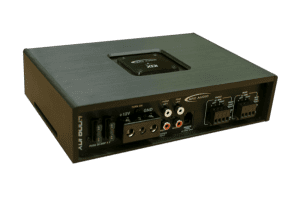 The benefit of Class D amplifiers is their efficiency and low-to-moderate power levels. Class D amps use high-frequency pulse-width modulation waveforms to switch MOSFETs (metal-oxide-semiconductor field-effect transistors) on and off very quickly to amplify signals. Filter networks on the output of the circuits remove high-frequency noise so that only the audio signal is left to drive our speakers. Class D amplifiers allow manufacturers to produce much more powerful amplifiers that take up very little space. These amplifiers consume less current than their Class AB counterparts.
The benefit of Class D amplifiers is their efficiency and low-to-moderate power levels. Class D amps use high-frequency pulse-width modulation waveforms to switch MOSFETs (metal-oxide-semiconductor field-effect transistors) on and off very quickly to amplify signals. Filter networks on the output of the circuits remove high-frequency noise so that only the audio signal is left to drive our speakers. Class D amplifiers allow manufacturers to produce much more powerful amplifiers that take up very little space. These amplifiers consume less current than their Class AB counterparts.
Computerized Source Units
Around 1980, we saw the first digitally tuned car radios. Mechanical tuning knobs and presets were replaced with vacuum fluorescent displays and electronic buttons. This would lead to computerized source units that included electronically controlled cassette players and equalizers with spectrum displays around 1982. By the late ’80s, with the growing popularity of CD players, having a microcontroller built into a car radio was commonplace.
Around 1992, companies like Alpine and Clarion were selling in-vehicle navigation systems that included LCD screens, and by 1993, digital communication solutions were available to transmit computer information to vehicles. In 1998, Clarion launched the AutoPC in conjunction with Microsoft to become the first in-vehicle computer. Modern multimedia receivers now run embedded versions of Windows and Linux operating systems.
The Apple iPod
 The Apple iPod was introduced in the fall of 2001. The original compact digital media players were only compatible with computers running the Apple Macintosh operating system and as such, sales were limited. In 2003, the iPod 3G was launched with a standard USB port instead of Firewire, making it compatible with Windows-based PCs as well. By June 2003, Apple had sold 1 million iPods.
The Apple iPod was introduced in the fall of 2001. The original compact digital media players were only compatible with computers running the Apple Macintosh operating system and as such, sales were limited. In 2003, the iPod 3G was launched with a standard USB port instead of Firewire, making it compatible with Windows-based PCs as well. By June 2003, Apple had sold 1 million iPods.
In June 2005, BMW announced that an iPod adapter would be available for the 3 Series, the Z4 Roadster, the X3 and X5 and the Mini Cooper, and was backward compatible to many 2002 models.
By 2005, the iPod was a popular solution for carrying thousands of songs, and Clarion launched its VRX745VD – a single-DIN multimedia receiver with a dedicated iPod interface. The iPod quickly replaced the CD changer as a means of storing a large number of songs in vehicles.
Bluetooth
 Though incorrectly perceived as a hands-free and audio streaming technology, Bluetooth was created in 1994 as an alternative to RS-232 wired communication. Within the Bluetooth communication standards are dozens of profiles, including fax, cordless telephony, printing, file transfer, dial-up networking and of course, the hands-free and audio distribution profiles that we know and love! In 2002, the Audi R8 was the first to apply Bluetooth technology in a car. DaimlerChrysler, Acura and BMW joined in 2003.
Though incorrectly perceived as a hands-free and audio streaming technology, Bluetooth was created in 1994 as an alternative to RS-232 wired communication. Within the Bluetooth communication standards are dozens of profiles, including fax, cordless telephony, printing, file transfer, dial-up networking and of course, the hands-free and audio distribution profiles that we know and love! In 2002, the Audi R8 was the first to apply Bluetooth technology in a car. DaimlerChrysler, Acura and BMW joined in 2003.
Apple CarPlay and Android Auto
 Since the very first car radios were built, people were concerned about them being a distraction. Turning the tuner knob to find a local station meant you weren’t focused on the road in front of you. In the late ’90s, we saw drivers with headsets and earpieces making phone calls while they drove. Adding a headset was a common purchase with a new phone. In the mid-2000s, Bluetooth communication replaced wired hands-free connections.
Since the very first car radios were built, people were concerned about them being a distraction. Turning the tuner knob to find a local station meant you weren’t focused on the road in front of you. In the late ’90s, we saw drivers with headsets and earpieces making phone calls while they drove. Adding a headset was a common purchase with a new phone. In the mid-2000s, Bluetooth communication replaced wired hands-free connections.
Data distractions took off in the late ’90s and early 2000s with the Blackberry. When smartphone technology took off in the 2000s, so did text messaging. We now had lots of ways to distract us from our driving duties.
Apple realized that the smartphone was as much of a problem as it was a solution in the early 2010s. In 2013, Siri Eyes Free was offered as a dealer-installed accessory for several Honda and Acura vehicles. In 2014, the Ferrari FF became the first new vehicle to come equipped with Apple CarPlay.
CarPlay is a software application that runs on the multimedia source unit in the vehicle and uses the Siri voice recognition engine built into the iPhone to allow voice commands to be executed. You can send a text message, make a phone call or choose the music you want by simply asking. Turn-by-turn navigation is also included.
The Open Automotive Alliance announced in 2014 that it would introduce a competing technology for Android-based smartphones called Android Auto. The 2015 Hyundai Sonata was the first OEM implementation of Android Auto. Few car audio technologies have rivaled the importance of CarPlay and Android Auto.
Technology for Safety and Entertainment
There have been hundreds, if not thousands, of milestones throughout the 100-plus years of automotive technology advances. These innovations are just a sampling of the way mobile electronics have evolved and changed. If you are looking for the latest and greatest car audio technologies, or simply want to improve the performance of your entertainment system, visit your local mobile electronics specialist retailer.
This article is written and produced by the team at www.BestCarAudio.com. Reproduction or use of any kind is prohibited without the express written permission of 1sixty8 media.
 In our Bang for your Buck series, we talk about product features and component designs that offer increased value and performance. We’ve discussed source units and speakers, and now it’s time to take a deep look into amplifiers and what separates one amplifier from another.
In our Bang for your Buck series, we talk about product features and component designs that offer increased value and performance. We’ve discussed source units and speakers, and now it’s time to take a deep look into amplifiers and what separates one amplifier from another. For decades, manufacturers of high-end amplifiers have provided damping factory specifications. This number is a ratio of the output impedance of the amplifier to a specified load impedance. The story goes that an amplifier with a higher number would produce a tighter, more-controlled sound because the low impedance of the amp would short the back-EMF signal from the speaker.
For decades, manufacturers of high-end amplifiers have provided damping factory specifications. This number is a ratio of the output impedance of the amplifier to a specified load impedance. The story goes that an amplifier with a higher number would produce a tighter, more-controlled sound because the low impedance of the amp would short the back-EMF signal from the speaker.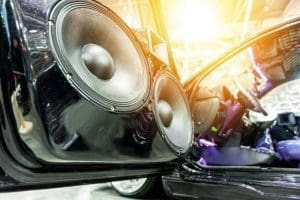 Any electronic device creates unwanted noise when a signal passes through it. Even something as simple as a resistor creates a small amount of noise. In this example, it’s likely too small to be audible – but it’s there. In a complex circuit with gain (an increase in signal amplitude), creating unwanted noise is a common byproduct of questionable design.
Any electronic device creates unwanted noise when a signal passes through it. Even something as simple as a resistor creates a small amount of noise. In this example, it’s likely too small to be audible – but it’s there. In a complex circuit with gain (an increase in signal amplitude), creating unwanted noise is a common byproduct of questionable design. The image above shows amazing performance from a very high-end solid-state home amplifier. As you can see, there is a little bit of 150 and 175 Hz content, but it is at almost -120 dB below the stimulus signal.
The image above shows amazing performance from a very high-end solid-state home amplifier. As you can see, there is a little bit of 150 and 175 Hz content, but it is at almost -120 dB below the stimulus signal.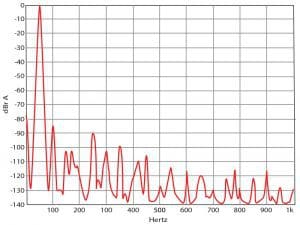 In this example, we can see the harmonics created in a high-end home audio Class D amplifier. A 100 Hz signal is present at a level of -85 dB and a 250 Hz signal is present at a level of -90 dB.
In this example, we can see the harmonics created in a high-end home audio Class D amplifier. A 100 Hz signal is present at a level of -85 dB and a 250 Hz signal is present at a level of -90 dB. To really highlight the potential for unwanted behavior, we have included the spectral content of a high-end vacuum tube amplifier. You can see that there is spectral content at 100 Hz at a level of -42 dB, 150Hz content at -54 dB and 200 Hz content at -67 dB. This distortion would be audible during listening.
To really highlight the potential for unwanted behavior, we have included the spectral content of a high-end vacuum tube amplifier. You can see that there is spectral content at 100 Hz at a level of -42 dB, 150Hz content at -54 dB and 200 Hz content at -67 dB. This distortion would be audible during listening.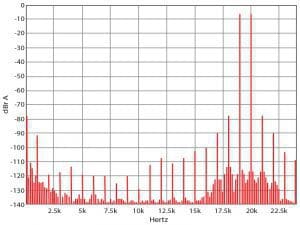 This graph shows the same Class D as in the discussion of harmonic distortion. It is easy to see that the test stimulae created a significant amount of information. The peak is at -78 dB, so it’s not a complete disaster.
This graph shows the same Class D as in the discussion of harmonic distortion. It is easy to see that the test stimulae created a significant amount of information. The peak is at -78 dB, so it’s not a complete disaster.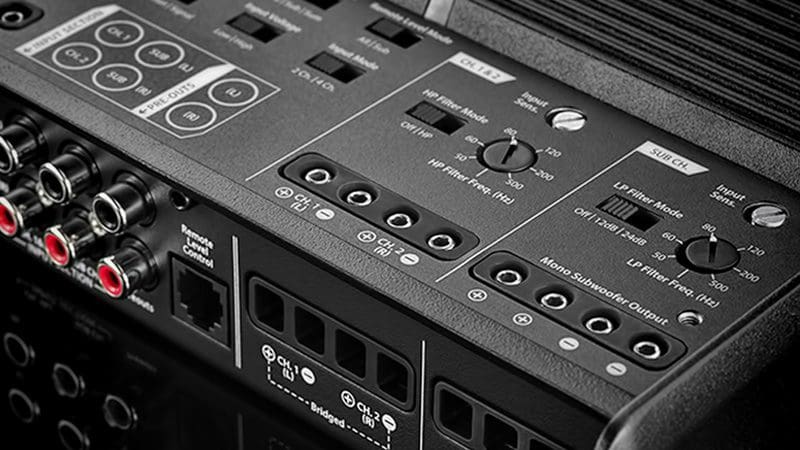 Shopping for a new
Shopping for a new 
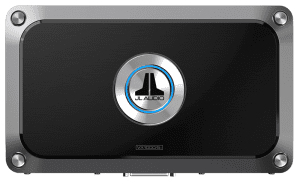

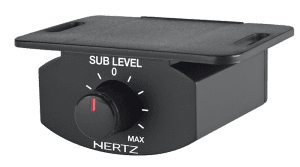 If you are going to use the amp you have chosen to drive a
If you are going to use the amp you have chosen to drive a 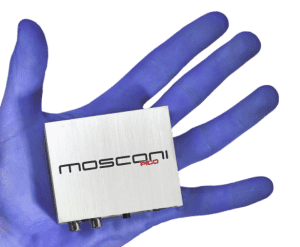
 The second-to-last step in choosing an amplifier for your vehicle is to choose the right installation accessories for it. No, we aren’t talking about chrome shrouds or lighting kits. Your choice of power wire can have a dramatic effect on the performance and reliability of your amplifier. It might sound like a sales pitch, but don’t be stingy with the wiring you choose. A $40 amp kit with 1,000-watts printed on the package may look like a deal, but do you think it will supply power to your amp the same way a $100 kit will?
The second-to-last step in choosing an amplifier for your vehicle is to choose the right installation accessories for it. No, we aren’t talking about chrome shrouds or lighting kits. Your choice of power wire can have a dramatic effect on the performance and reliability of your amplifier. It might sound like a sales pitch, but don’t be stingy with the wiring you choose. A $40 amp kit with 1,000-watts printed on the package may look like a deal, but do you think it will supply power to your amp the same way a $100 kit will?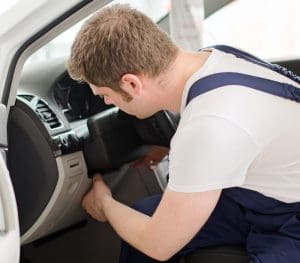 Last and certainly not least is your choice of who will install your amplifier. Cars and trucks aren’t as simple as they used to be. Composite construction, aluminum, high-strength adhesives, computer data networks and BCM-controlled charging systems require that someone with extensive experience work on your vehicle. Assuming that your new car or truck is like every other vehicle they have worked on is a recipe for disaster.
Last and certainly not least is your choice of who will install your amplifier. Cars and trucks aren’t as simple as they used to be. Composite construction, aluminum, high-strength adhesives, computer data networks and BCM-controlled charging systems require that someone with extensive experience work on your vehicle. Assuming that your new car or truck is like every other vehicle they have worked on is a recipe for disaster.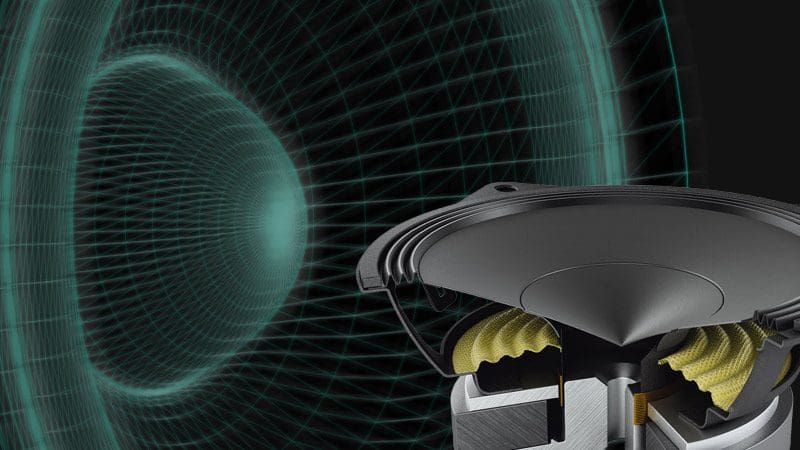 We recently talked about the difference between
We recently talked about the difference between 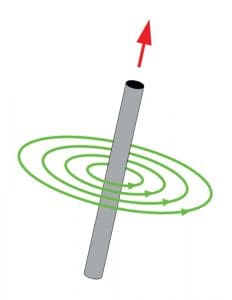
 So, how does inductance cause distortion in a speaker? As you can see in the diagram above when the voice coil winding (in red) is at rest, it is centered on the top plate (in green). As the cone moves down, more of the voice coil is beside the magnet (in blue) and the pole piece (in pink). Conversely, as the come moves outward, less of the cone is near the pole. In a conventional speaker design, the changes in proximity to the steel pole piece cause changes in inductance. As the inductance decreases, there is less opposition to the flow of high-frequency current and an increase in high-frequency performance. Changes in performance based on the position of the speaker cone result in distortion.
So, how does inductance cause distortion in a speaker? As you can see in the diagram above when the voice coil winding (in red) is at rest, it is centered on the top plate (in green). As the cone moves down, more of the voice coil is beside the magnet (in blue) and the pole piece (in pink). Conversely, as the come moves outward, less of the cone is near the pole. In a conventional speaker design, the changes in proximity to the steel pole piece cause changes in inductance. As the inductance decreases, there is less opposition to the flow of high-frequency current and an increase in high-frequency performance. Changes in performance based on the position of the speaker cone result in distortion.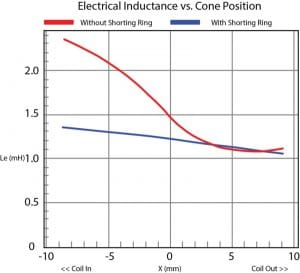
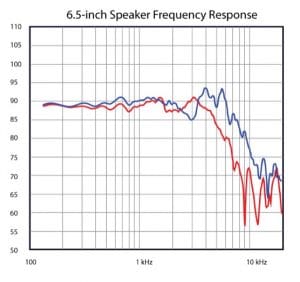 The graph above shows the frequency response of a speaker without a shorting ring (in red) and that of a very similar speaker with a shorting ring (in blue). As is clearly evident, the inclusion of a shorting ring dramatically improves the high-frequency performance of a speaker. Further improvements in linearity can be achieved by including a copper cap on top of the T-yoke.
The graph above shows the frequency response of a speaker without a shorting ring (in red) and that of a very similar speaker with a shorting ring (in blue). As is clearly evident, the inclusion of a shorting ring dramatically improves the high-frequency performance of a speaker. Further improvements in linearity can be achieved by including a copper cap on top of the T-yoke.
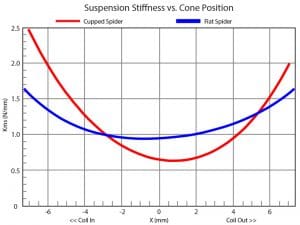

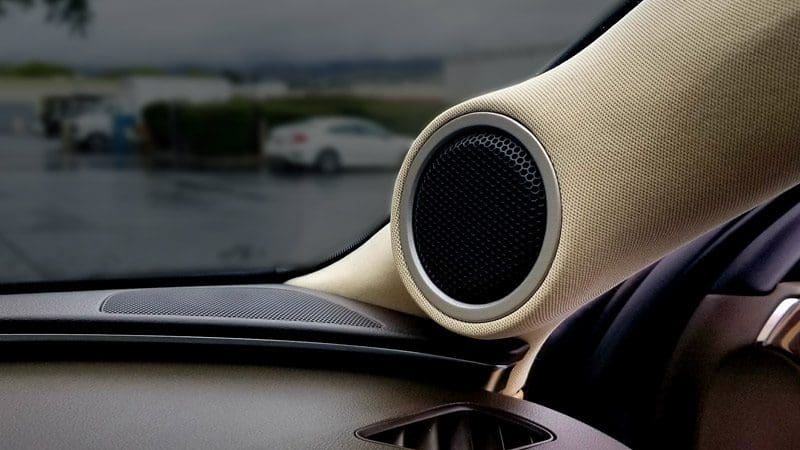 It should be no surprise that your choice of speakers has the biggest impact on the sound quality of your car audio system. With that said, many consumers simply don’t understand what separates one speaker from another in terms of performance and value. In this installment of Bang for Your Buck, we are going to talk about
It should be no surprise that your choice of speakers has the biggest impact on the sound quality of your car audio system. With that said, many consumers simply don’t understand what separates one speaker from another in terms of performance and value. In this installment of Bang for Your Buck, we are going to talk about 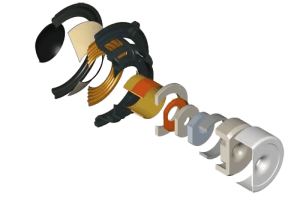
 Cameras are a good analogy for speaker performance. An inexpensive digital camera hanging on a peg in a big-box store will take a picture of anything. You’ll be able to discern the content of the photo without any problem.
Cameras are a good analogy for speaker performance. An inexpensive digital camera hanging on a peg in a big-box store will take a picture of anything. You’ll be able to discern the content of the photo without any problem.
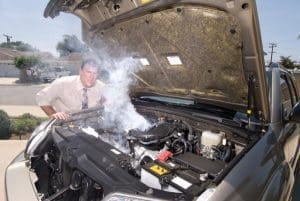
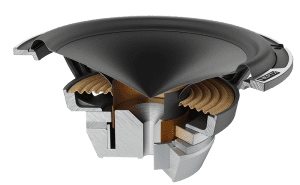
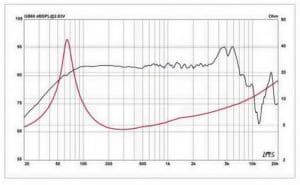 Sadly, very few companies talk about
Sadly, very few companies talk about 